DP-500 Table of contents
If someone asks you to name a feature or concept in Power BI that is the most confusing, I can bet that licensing would be on the top (or close to the top) of that list! It is especially intimidating for many Power BI newbies. You don’t want to know how many times I was asked to explain the differences between various licensing options in Power BI, and recommend the optimal licensing strategy. And, I honestly find this topic one of the most challenging for many companies considering the best approach for Power BI adoption.
So, let’s demystify Power BI licensing!
User vs Capacity
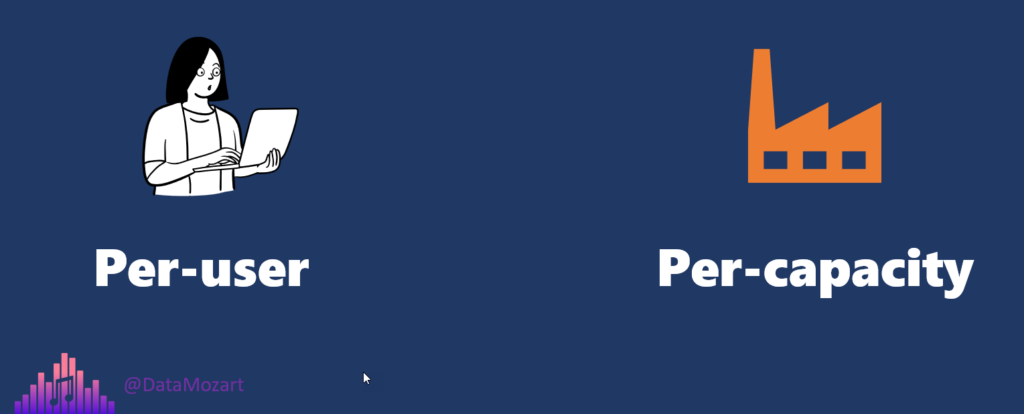
The first distinction to keep in mind is between Per-user licenses and capacity-based licenses. That’s the highest level of distinction.
Let’s now focus on understanding per-user licenses. Here, there are three different license types:
1. Free license
2. Pro license
3. Premium Per User license
On the other hand, it’s a two-choice way when we are talking about organizational licenses. Your company either pays for a dedicated capacity, which is what we’re calling Premium capacity. Or, they don’t pay and your workspaces are placed in the shared capacity – when I say shared, I mean you share the resources with other non-paying organizations.
User license – FREE
Let’s start with the simplest per-user license type, which is a Free license.
And, again, there are two possible perspectives of understanding what is feasible and available with the free license.
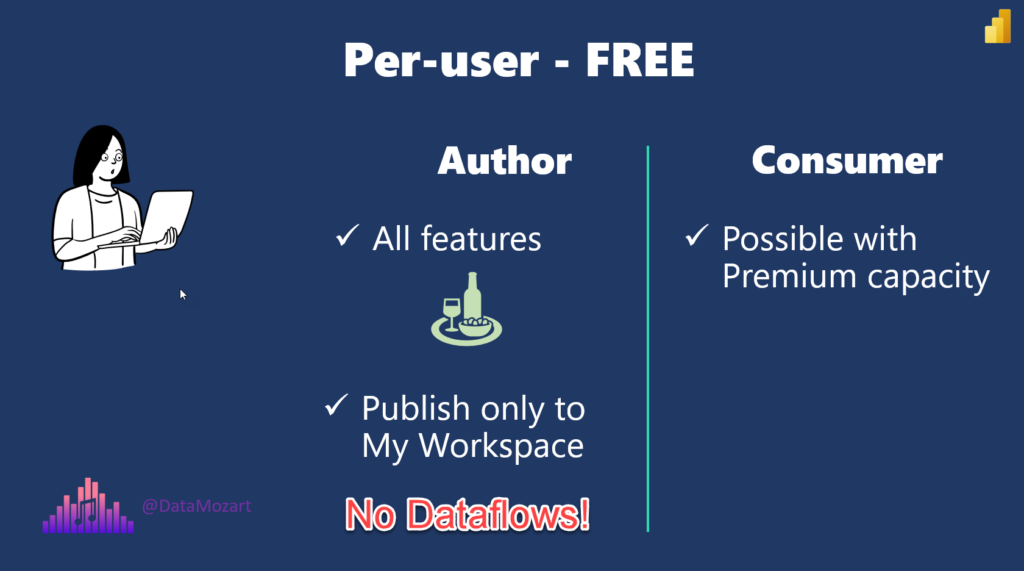
If you’re a report author, you can use Power BI Desktop to create a fully-fledged Power BI report, using all the features that are available to users with paid licenses. So, there IS a free lunch for you as a report author, considering that we are talking about Power BI Desktop as an authoring tool.
But…Once you are done and you want everyone to see how magnificent Power BI developer you are…Well, you can’t really do that. The only thing you can do, is to publish the report to My Workspace. My Workspace comes with many limitations – most noticeable, no one else can access the content in My Workspace except you. Additionally, some of the Power BI assets, such as dataflows, can’t be created from within My Workspace, so with a free license, you can’t create and manage dataflows, unlike with paid licenses, where this is possible. (Thanks to Melissa Coates for the hint)
On the other side, and this is really important, if you’re a report consumer with the free license, and your organization has implemented Premium capacity, you CAN consume the content without paying anything. To be honest, your company is already paying for you😊
User license – PRO
Ok, that’s free license. Let’s now explain how a Pro license works. Again, from the perspective of both the content author and the content consumer.
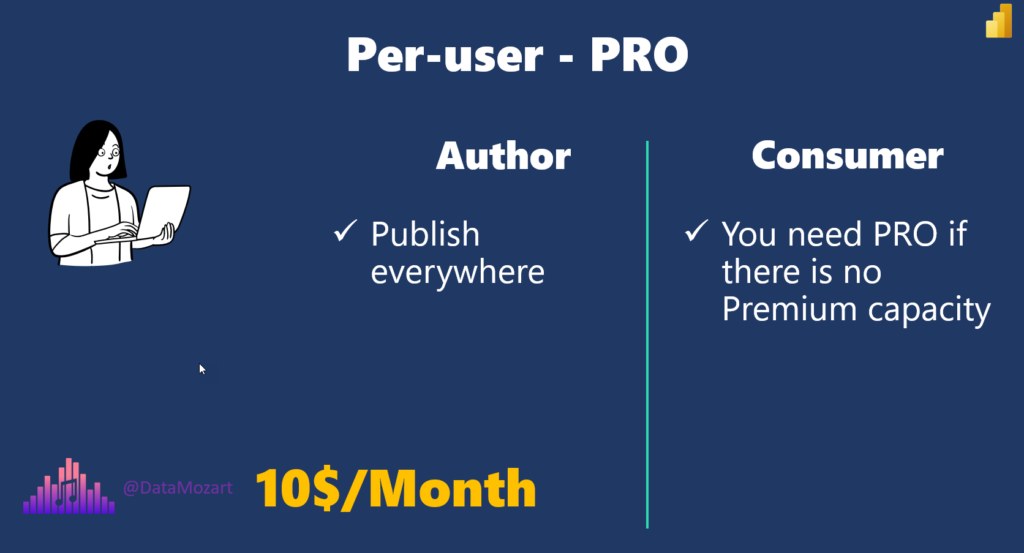
So, if you’re a content creator, your shiny Power BI report can potentially reach many, many consumers. You can publish reports to both regular and Premium workspaces. That’s easy-peasy to understand.
Now, if you’re a report consumer, and your organization doesn’t pay for the dedicated capacity, you’ll need a Pro license to consume the content.
The price of a Pro license at this moment is 10$ per user per month.
User license – Premium Per User (PPU)
Let’s wrap up this per-user license story by explaining how the PPU license works.
You can think of it as a Pro license on steroids. Meaning, you are getting all the Pro features, plus most of the features that are available in Premium capacity-based licenses. Please, don’t mix this license with Premium-per-capacity, these two are completely different in many aspects.
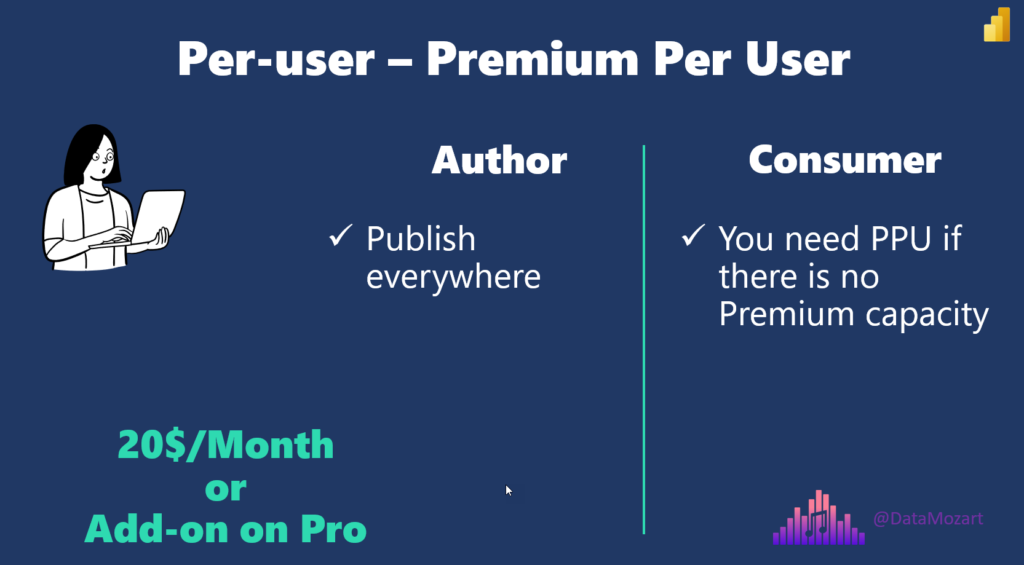
Same as with the Pro license, a content author with a PPU license can publish that content to regular workspaces. However, there is a difference from the report consumer perspective – consumers with a Pro license will not be able to access the content created by PPU licensed users, unless the workspace is not part of the Premium capacity. If that’s the case, so if the PPU content is published in a workspace that is part of the Premium-per-capacity license, then both Pro users and free users can access this content. If not, then report consumers must also have a PPU license to be able to access the content.
PPU license can be obtained in two possible ways: either as an add-on on top of the existing Pro license, where you’ll pay an additional 10$ per month, or as a standalone product, for 20$ per month, per user.
Buy me a gym!
I know that all this sounds a little bit overwhelming, therefore I’ll try to give you a simple analogy to understand how different license types works in Power BI.
Let’s say that you started to work for a company and you wish to start using a gym.
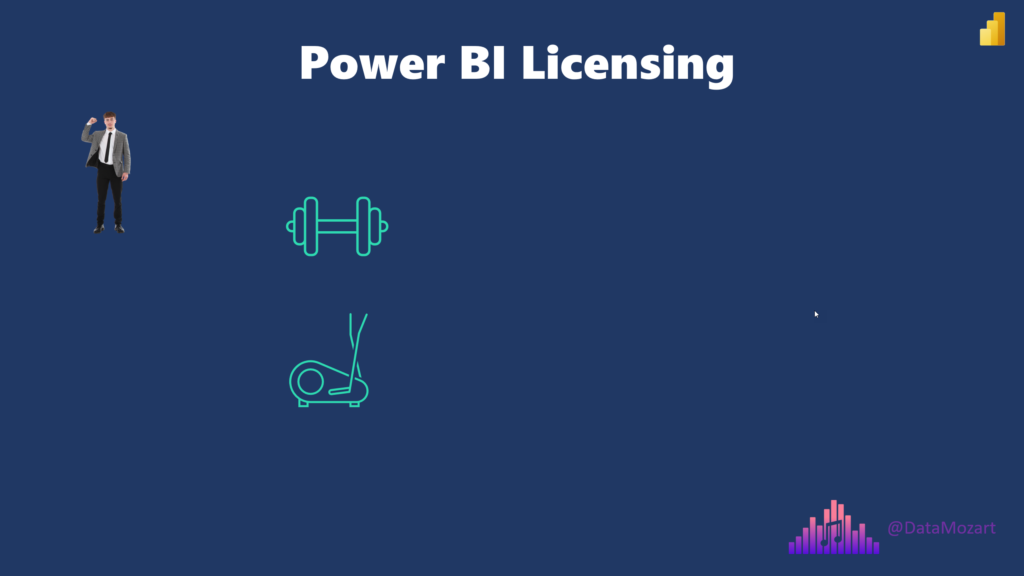
And, you’re not alone – your colleagues also like to visit a gym…
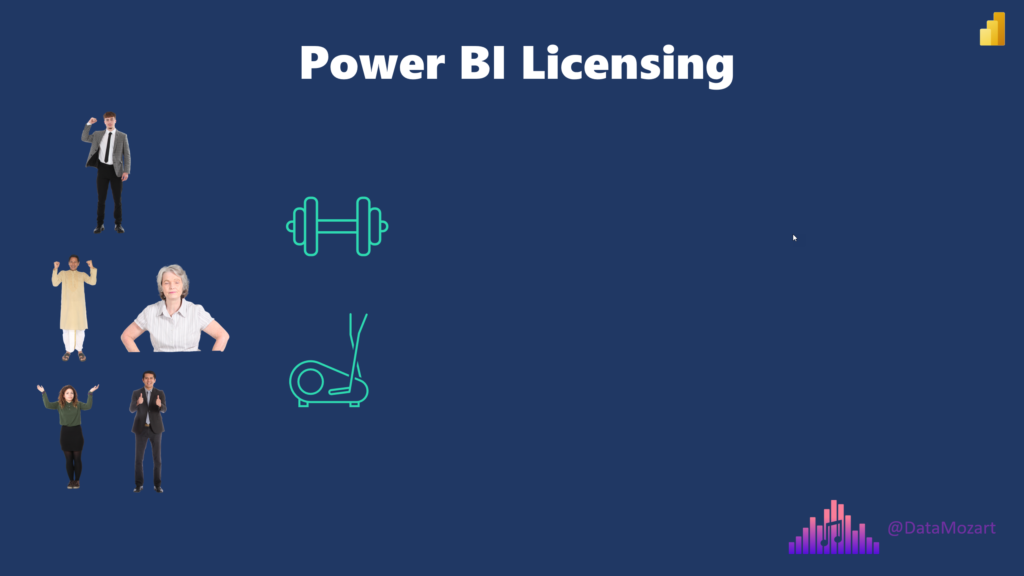
Now, what are the possible options for a company to make you and other employees happy?
First, they can pay gym pass for you, let’s say 10$ per month. The amount is intentionally equivalent to a Pro license in Power BI. And every month, they will pay 10$ for you. It’s a Power BI Pro license.

Then, next month, another 50 colleagues want to go to the gym, so the company will pay 10$/month for each of them. Then, after getting more and more requests, let’s imagine that 500 of you want to visit the gym every month. It’s 5000 bucks per month, wooow!
So, the company may decide to buy a gym! Yes, the whole gym, only for you folks! And, you know what? If there are additional 500 colleagues that want to go to the gym…There you go! We have our own gym!
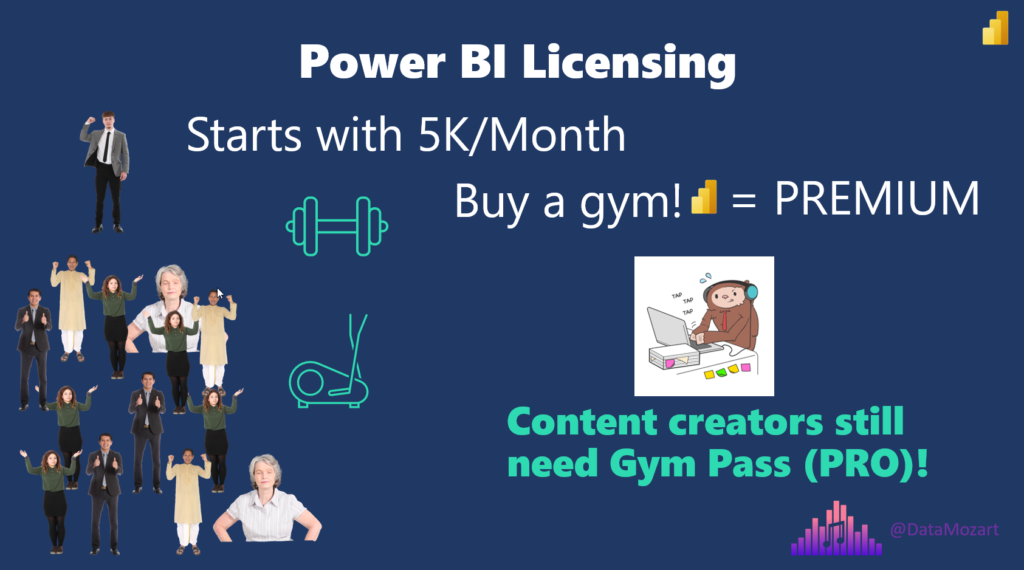
With all the latest and coolest equipment, coffee machine, etc. That’s a Premium capacity-based license. Just to be clear – we are here talking about the consumers. Your colleagues that provide, build, and maintain gym equipment still need to pay 10$ per month. Translated to Power BI – content authors would still need to pay for a Pro license!
Based on the gym size and features, it may cost from 5000$ per month, to a few tens of thousand per month. It’s the same with Power BI. P1 entry point in the “real” premium world is approximately 5 K per month. Of course, there are additional options for leveraging premium-per-capacity licenses, as all licenses are divided into three different SKU families: P, A, and EM. However, let’s keep it simple for the purpose of this article, without going into details about each of these SKU types. If you’re interested to learn more about various capacities and SKUs, please refer to this article.
Conclusion
Before we draw conclusions in which scenarios make sense to choose a specific licensing option for the organization, here is the tabular view of different license types and their capabilities.

Please pay attention to these cells that are marked with red, as they will help you understand potential caveats in successful content distribution and consumption.
To conclude:
- Power BI Pro is cheap and provides most of the features
- Premium capacity makes sense for a large number of consumers
- Premium Capacity makes sense for very large data models
- PPU makes sense for a small number of users that need premium features
Thanks for reading!
Last Updated on January 20, 2023 by Nikola




